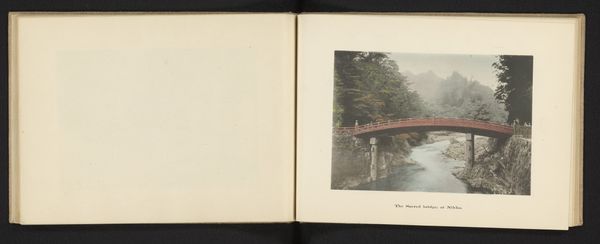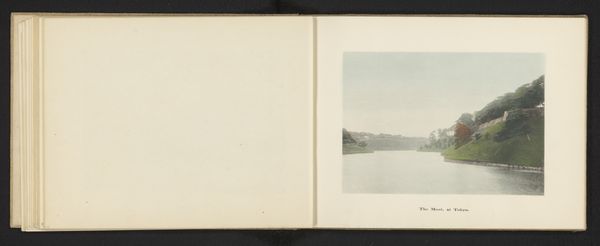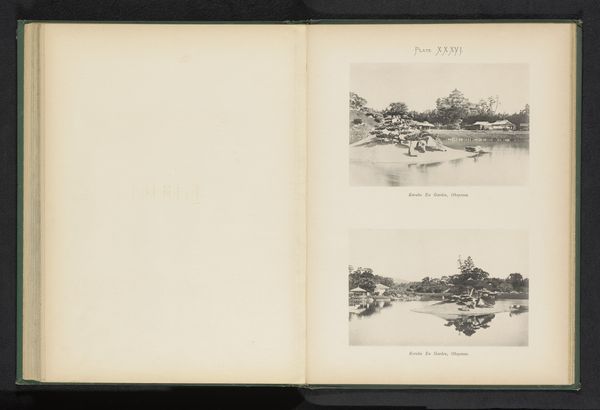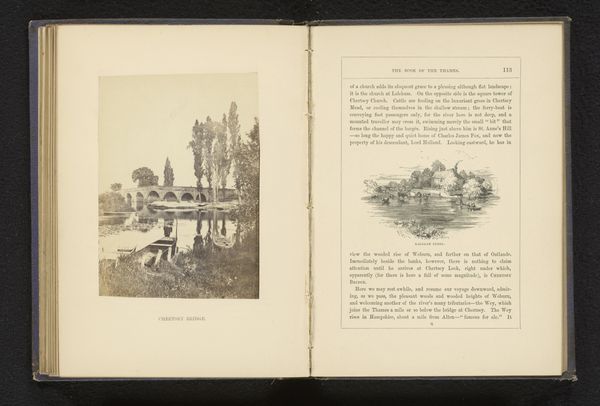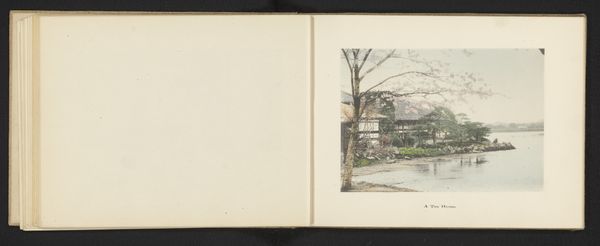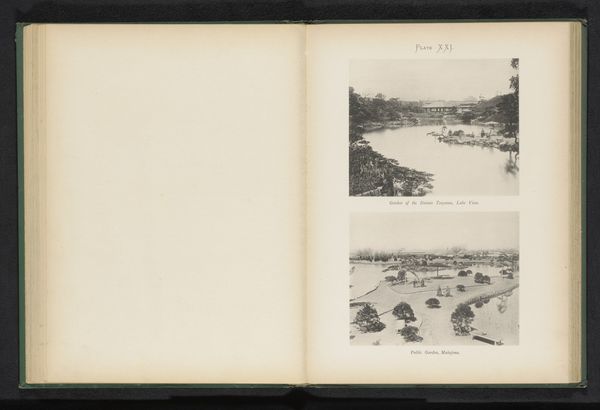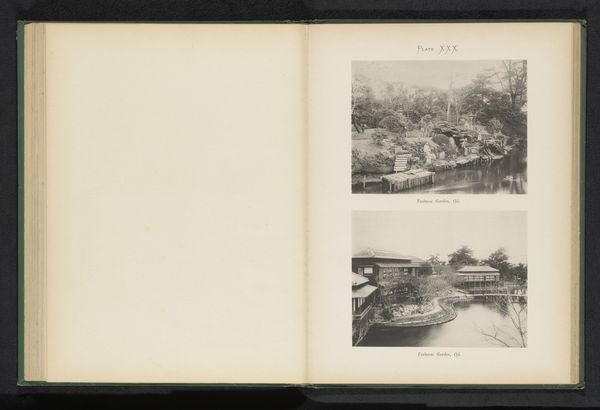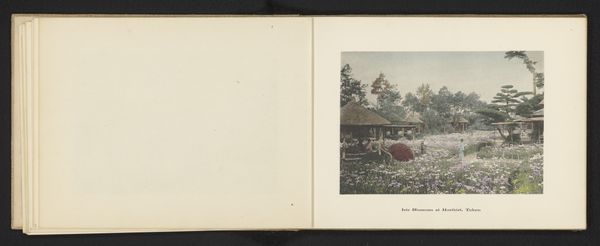
photography, architecture
#
landscape
#
photography
#
architecture
Dimensions: height 105 mm, width 151 mm
Copyright: Rijks Museum: Open Domain
Editor: Here we have Kōzaburō Tamamura’s "View of a Teahouse on Lake Chūzenji in Nikko," a hand-colored albumen print dating from around 1895 to 1905. The coloring gives it a very serene, almost dreamlike quality. What stands out to you in this work? Curator: I'm struck by the composition, and its engagement with Japonisme, of course. It begs us to consider the relationship between Japan and the West at the turn of the century. These photographic albums catered to a Western audience eager to consume an idealized version of Japanese landscapes and culture. But let's think critically – who is being represented, and who is being excluded from this idyllic scene? Editor: I see what you mean. It seems like a very curated view of Japan. Almost like a postcard. Curator: Exactly. Consider the labor involved in hand-coloring these photographs, often performed by women. Their work is essentially invisible, subsumed into the “artist's” vision. And who had access to these leisure spaces? What does the teahouse represent in terms of class and social hierarchies? These images helped to construct a very specific, marketable idea of Japan, even exoticizing Japan in the context of colonialism and international trade. Editor: So it’s less about capturing reality, and more about creating a consumable fantasy? Curator: Precisely. By recognizing the power dynamics inherent in these images, we can begin to deconstruct the narratives they promote and appreciate them through a more critically informed lens. What can you do to resist those narratives? Editor: I'll definitely be thinking about whose stories aren't being told in these images. It's a reminder to look beyond the surface of beauty. Curator: That's exactly right. There’s an inherent complexity in images such as these, which goes beyond the first impression of aesthetic beauty, which ultimately helps to better our understanding and interpretation of Japanese artwork, photography, and Japanese culture.
Comments
No comments
Be the first to comment and join the conversation on the ultimate creative platform.
